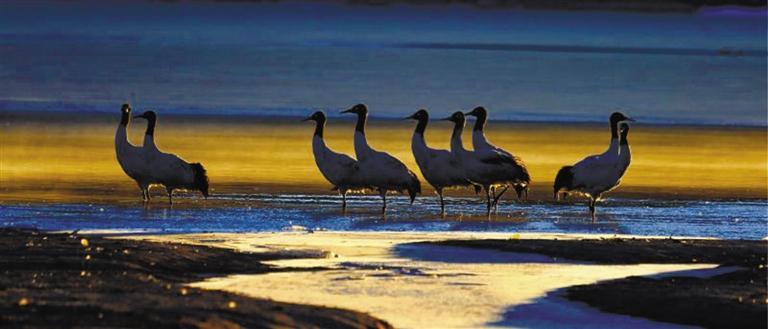By 朱杉 Source:China Tibet News 2016-10-17
Black-necked crane, the first class state protected wildlife, mainly lives along Yarlung Zangbor River, Lhasa River and Nyangchu River. Billed as "highland holy bird", the critically endangered bird is sacred in Tibetans' believe. When winter comes, a group of black-necked cranes will migrate to Lhasa, capital of southwest China's Tibet Autonomous Region, to spend winter.
Thanks to a series of protection measures and the increasing awareness of ecological conservation, the population of black-necked cranes goes up to more than 7,000 from 3,000 in 1995, according to statistics.
It is estimated that Lhasa will welcome over 2,000 black-necked cranes this winter from mid-late October to next March. They will fly back when the weather warms up.
Lhasa and Shigatse are major winter habitats of black-necked cranes in Tibet, of which Lhatse County, Sakya County, Namling County, Shetongmon County and Panam County are the largest habitats of black-necked cranes in winter.
Lhasa Bureau of Wildlife Conservation has strengthened the supervision and patrol in nature reserves of black-necked cranes, which ensures the safety of black-necked cranes in Lhasa.

Photo shows black-necked cranes at Lhundrup County state-level nature reserve. [ Photo/China Tibet News]
Copyright © Xizang Daily & China Xizang News All rights reserved
Reproduction in whole or in part without permissions prohibited
Index Code: 藏 ICP 备 05000021 号
Producer: Xizang Daily International Communication Center